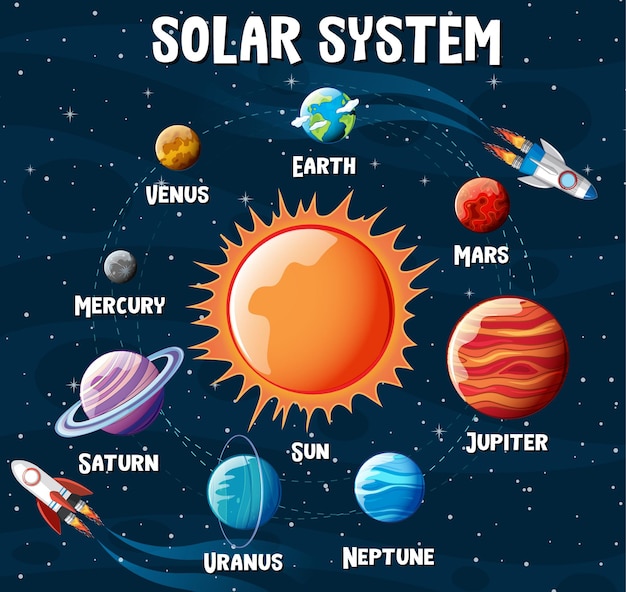Venus – Fun Facts for Kids

Venus is the second planet from the Sun.
Venus is named after the Roman goddess of love and beauty.
Venus is often called Earth’s twin because it is similar in size.
Venus has no moons.
Venus is sometimes called the morning star or the evening star because it can be seen in the early morning or evening sky.
Venus is the hottest planet in our solar system, with temperatures reaching over 900 degrees Fahrenheit (475 degrees Celsius).
Venus has a thick atmosphere made mostly of carbon dioxide.
Venus has mountains, valleys, and volcanoes on its surface.
Venus rotates very slowly, taking about 243 Earth days to complete one rotation.
A day on Venus is longer than a year on Venus.
Venus has no liquid water on its surface.
The intense heat and pressure on Venus make it impossible for humans to survive there.
Venus has been visited by several spacecraft, including the Soviet Venera missions and NASA’s Magellan spacecraft.
The surface of Venus is covered in volcanic plains and rocky highlands.
Venus is the brightest object in the night sky, after the Moon.
Venus has a thick cloud cover that reflects sunlight, making it appear very bright.
The atmosphere of Venus is so dense that it creates a greenhouse effect, trapping heat and raising temperatures.
Venus has a thick layer of sulfuric acid clouds that create a yellowish color.
Venus has a similar composition to Earth, with a rocky surface and a metal core.
Venus – Fun Facts for Kids part 2
Venus does not have a magnetic field like Earth.
Venus has craters on its surface, but they are fewer in number compared to other planets.
The surface of Venus is constantly changing due to volcanic activity.
Venus has no seasons because it has a very small axial tilt.
Venus is named after the goddess of love because of its beauty in the night sky.
Venus is the third brightest object in the sky, after the Sun and the Moon.
Venus has been observed since ancient times by many civilizations.
Venus is often called Earth’s sister planet because of their similar size and composition.
Venus has been called the jewel of the sky because of its brightness and beauty.
Venus has been the subject of many scientific missions and studies to understand its atmosphere and surface.
Venus has a thick layer of clouds that reflect sunlight, making it appear brighter than it really is.
Venus has a retrograde rotation, meaning it rotates in the opposite direction of most other planets.
Venus has no natural satellites like Earth’s Moon.
Venus has a thick atmosphere that creates a greenhouse effect, making it the hottest planet in our solar system.
Venus has a high pressure atmosphere, making it impossible for humans to survive without protective suits.
Venus has been visited by several space probes, including the Venera missions and the Mariner spacecraft.
Venus has a volcanic surface with many volcanoes and lava flows.
Venus has no liquid water, so there are no rivers or oceans.
Venus has a dense atmosphere that protects it from meteoroids, causing them to burn up before reaching the surface.
Venus has many similarities to Earth, but it is not suitable for human habitation.
Venus has a unique cloud pattern in its atmosphere, with dark streaks and swirls.
Venus has a diameter of about 12,104 kilometers, making it slightly smaller than Earth.
Venus has no tectonic plates like Earth, so there are no earthquakes or continental drift.
Venus has a slow rotation speed, taking 243 Earth days to complete one rotation.
Venus has a high level of volcanic activity, with several active volcanoes on its surface.
Venus is a fascinating planet to study, with many mysteries yet to be uncovered.

